Shure orporated ADX1K54 Wireless Microphone Transmitter User Manual Exhibit D Users Manual per 2 1033 b3
Shure Incorporated Wireless Microphone Transmitter Exhibit D Users Manual per 2 1033 b3
Contents
- 1. Exhibit D Users Manual per 2 1033 c3
- 2. Exhibit D Users Manual per 2 1033 b3
Exhibit D Users Manual per 2 1033 b3
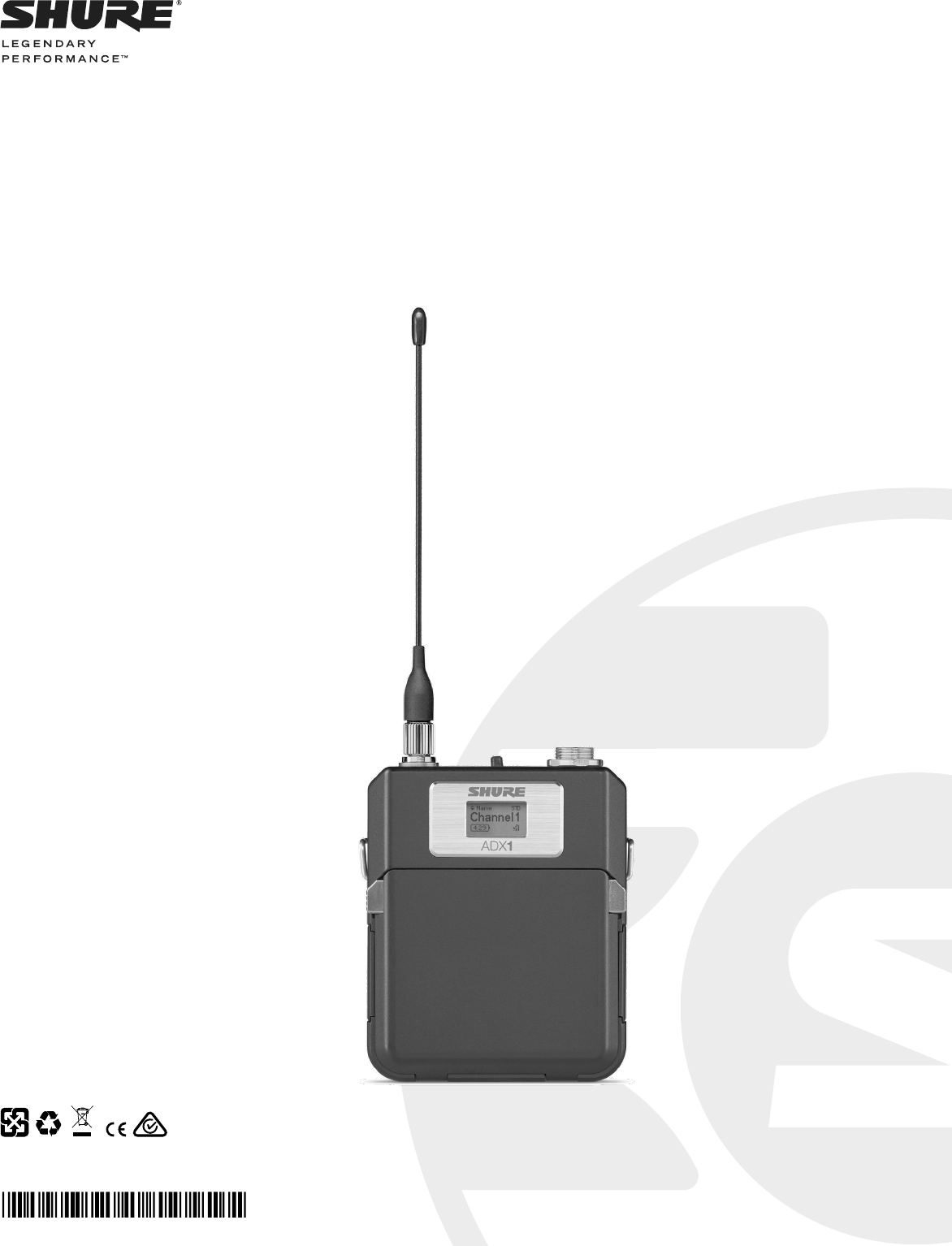
ADX1 Axient Digital Bodypack Transmitter
USER GUIDE
© 2017 Shure Incorporated
27A33410 (Rev. Preliminary)
Printed in U.S.A.
AXIENT® DIGITAL
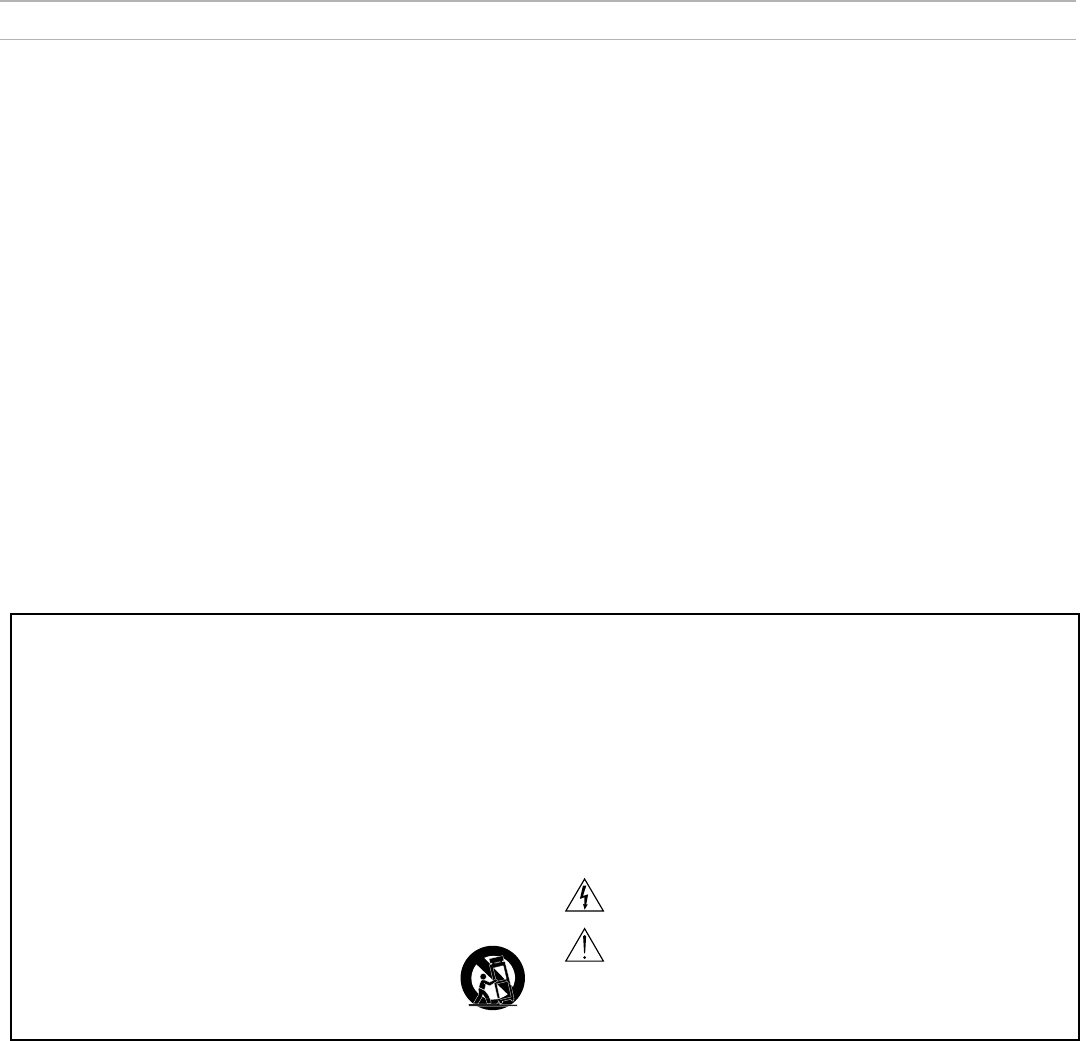
WARNING
• Battery packs may explode or release toxic materials. Risk of fire or burns. Do not open, crush, modify, disassemble, heat above 140°F (60°C), or
incinerate.
• Follow instructions from manufacturer
• Only use Shure charger to recharge Shure rechargeable batteries
• WARNING: Danger of explosion if battery incorrectly replaced. Replace only with same or equivalent type.
• Never put batteries in mouth. If swallowed, contact your physician or local poison control center
• Do not short circuit; may cause burns or catch fire
• Do not charge or use battery packs other than Shure rechargeable batteries
• Dispose of battery packs properly. Check with local vendor for proper disposal of used battery packs.
• Batteries (battery pack or batteries installed) shall not be exposed to excessive heat such as sunshine, fire or the like
Note: Use only with the included power supply or a Shure-approved equivalent.
Please follow your regional recycling scheme for batteries, packaging, and electronic waste.
WARNING: This product contains a chemical known to the State of California to cause cancer and birth defects or other reproductive harm.
低功率電波輻射性電機管理辦法
第十二條
經型式認證合格之低功率射頻電機,非經許可,公司、商號或使用者均不得擅自變更頻率、加大功率或變更原設計之特性及功能。 第十四條
低功率射頻電機之使用不得影響飛航安全及干擾合法通信;經發現有干擾現象時,應立即停用,並改善至無干擾時方得繼續使用。前項合法通信,指依電
信法規定作業之無線電通信。低功率射頻電機須忍受合法通信或工業、科學及醫療用電波輻射性電機設備之干擾。
IMPORTANT SAFETY INSTRUCTIONS
1. READ these instructions.
2. KEEP these instructions.
3. HEED all warnings.
4. FOLLOW all instructions.
5. DO NOT use this apparatus near water.
6. CLEAN ONLY with dry cloth.
7. DO NOT block any ventilation openings. Allow sufficient distances for adequate ventila-
tion and install in accordance with the manufacturer’s instructions.
8. DO NOT install near any heat sources such as open flames, radiators, heat registers,
stoves, or other apparatus (including amplifiers) that produce heat. Do not place any open
flame sources on the product.
9. DO NOT defeat the safety purpose of the polarized or groundingtype plug. A polarized
plug has two blades with one wider than the other. A grounding type plug has two blades
and a third grounding prong. The wider blade or the third prong are provided for your
safety. If the provided plug does not fit into your outlet, consult an electrician for replace-
ment of the obsolete outlet.
10. PROTECT the power cord from being walked on or pinched, particularly at plugs, conve-
nience receptacles, and the point where they exit from the apparatus.
11. ONLY USE attachments/accessories specified by the manufacturer.
12. USE only with a cart, stand, tripod, bracket, or table specified by the manu-
facturer, or sold with the apparatus. When a cart is used, use caution when
moving the cart/apparatus combination to avoid injury from tip-over.
13. UNPLUG this apparatus during lightning storms or when unused for long
periods of time.
14. REFER all servicing to qualified service personnel. Servicing is required when the ap-
paratus has been damaged in any way, such as power supply cord or plug is damaged,
liquid has been spilled or objects have fallen into the apparatus, the apparatus has been
exposed to rain or moisture, does not operate normally, or has been dropped.
15. DO NOT expose the apparatus to dripping and splashing. DO NOT put objects filled with
liquids, such as vases, on the apparatus.
16. The MAINS plug or an appliance coupler shall remain readily operable.
17. The airborne noise of the Apparatus does not exceed 70dB (A).
18. Apparatus with CLASS I construction shall be connected to a MAINS socket outlet with a
protective earthing connection.
19. To reduce the risk of fire or electric shock, do not expose this apparatus to rain or
moisture.
20. Do not attempt to modify this product. Doing so could result in personal injury and/or
product failure.
21. Operate this product within its specified operating temperature range.
This symbol indicates that dangerous voltage constituting a risk of
electric shock is present within this unit.
This symbol indicates that there are important operating and mainte-
nance instructions in the literature accompanying this unit.
WARNING: This product contains a chemical known to the State of California to cause cancer and birth
defects or other reproductive harm.
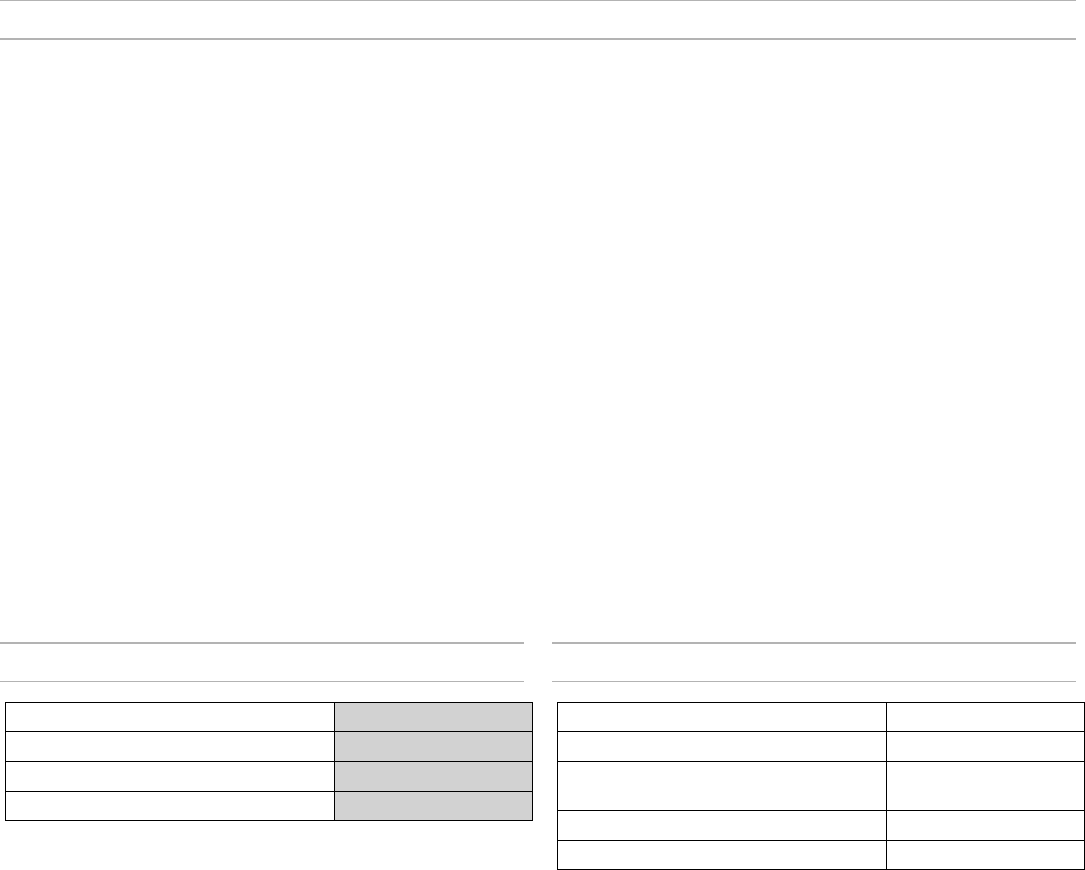
4
ADX1 Axient Digital Bodypack Transmitter
ADX series transmitters deliver impeccable audio quality and RF performance, and are equipped with ShowLink® remote control for real-time parameter
adjustments and interference avoidance. This transmitter features wide tuning, High Density (HD) mode, encryption, and advanced rechargeability in a
streamlined design. Light-weight aluminum construction, AAA or SB910 rechargeable power options (with lockable charging), and TA4 or LEMO3 con-
nector options.
Included Components
SB910 Shure Rechargeable Battery (2) 95A24832
¼ wave antenna Varies by Region
Transmitter carrying case WA610
Zipper bag 95A2313
Optional Accessories
SB910 Shure Rechargeable Battery 95A24832
3 x AAA Battery Sled for ADX1 Transmitter SB913
AD651FOB Talk Switch fob for bodypack
transmitters
90A37348
Replacement belt clip 44A12547
Shure Networked Docking Charger 2-Up SBC240
Features
Performance
• 184 MHz tuning range
• 20 Hz to 20 kHz range with flat frequency response
• Automatic input staging optimizes gain setting
• Diversity ShowLink-enabled for remote transmitter control and automat-
ic interference avoidance
• AES 256-bit encryption-enabled for secure transmission
• >120 dB, A-weighted, System Gain @ +10
• Digital output: >125dB, A-weighted (Dante, AES3, AES67)
• 100 meter (300 feet) line-of-sight operating range
• Selectable modulation modes optimize performance for spectral
efficiency
- Standard – optimal coverage, low latency
- High density – dramatic increase in max system channel count
• Built-in tone generator and RF markers to facilitate walk-testing
• Switchable Power Levels = 2/10/40 mW (region dependent)
• Frequency Diversity selection using two bodypacks
Design
• TA4 or LEMO3 audio connector option
• Backlit LCD with easy to navigate menu and controls
• Durable, moisture-resistant, lightweight aluminum case
• Flexible ¼ wave antenna
• Menu and power lockout
Power
• Shure SB910 rechargeable batteries for up to 10 hours of runtime, pre-
cision metering, and zero memory effect
• AAA-compatible battery sled available
• External charging contacts for docked charging
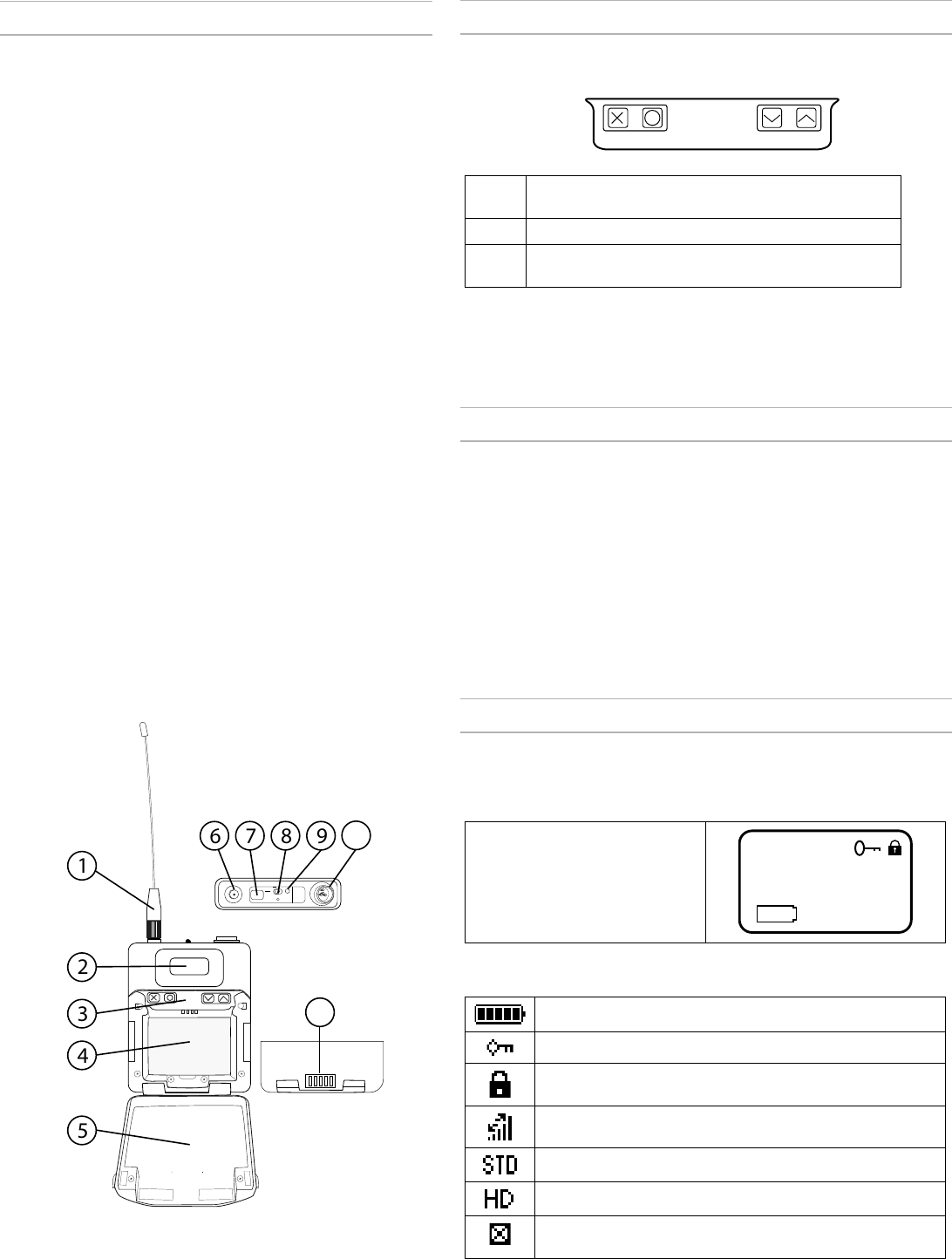
5
ADX1 Transmitter Overview
① RF Antenna
For RF signal transmission.
② Display
View menu screens and settings. Press any control button to
activate the backlight.
③ Control Buttons
Use to navigate through parameter menus and to change settings.
④ Battery Compartment
Requires Shure SB910 rechargeable battery.
⑤ Battery Door
Latching door to secure battery.
⑥ SMA Connector
Connection point for RF antenna.
⑦ Infrared (IR) Port
Align with the receiver IR port during an IR Sync for automated
transmitter tuning and setup.
⑧ Power Switch
Powers the unit on or off.
⑨ Power LED
- Green = unit is powered on
- Red = low battery, Mute Mode enabled, input overload, or battery error
(see Troubleshooting)
⑩ Input Jack
Connects to a 4-Pin Mini Connector (TA4F) microphone or
instrument cable.
Note: A LEMO connector model variation of this transmitter is available.
⑪ Battery Charging Contacts
Charging contacts for use with docking battery chargers.
10
11
Transmitter Controls
Use the controls to navigate through parameter menus and change values.
XActs as a 'back' button to return to previous menus or pa-
rameters without confirming a value change
OEnters menu screens and confirms parameter changes
∨∧ Use to scroll through menu screens and to change param-
eter values
Tip: Use the following control shortcuts for quick set up:
• Hold the ∧ button while powering-on to lock or unlock the transmitter
• Hold the X button while powering-on to set the transmitter RF output to mute
Locking the Interface
Lock transmitter interface controls to prevent accidental or unauthorized chang-
es to parameters. The lock icon is shown on the home screen when the inter-
face lock in enabled.
1. From the Utilities menu, navigate to Lock and se-
lect one of the following lock options:
- None: The controls are unlocked
- Power: The power switch is locked
- Menu: The menu parameters are locked
- All: The power switch and menu parameters are locked
2. Press O to save.
Tip: To quickly unlock a transmitter: Press O twice, select None, and press O.
Home Screen Display
The home screen shows transmitter information and status.
Tip: There are four options to choose the information shown on the home
screen. Use the arrow buttons to select one of the following choices:
• Name
• Frequency Setting
• Group (G) and Channel (C)
• Device ID
Shure
470.200MHz
7:45
The following icons appear to indicate transmitter settings:
Battery runtime in hours and minutes or bar display
Key: Displayed when encryption is enabled
Lock: Displayed when controls are locked. Icon will flash if ac-
cess is attempted to a locked control (power or menu).
ShowLink signal strength displays 0 to 5 bars
STD: Standard Transmission Mode
HD: High Density Transmission Mode
Box: When the box has an "x", Mute Mode is on and engaged. If
the box is empty, Mute Mode is on, but not engaged.
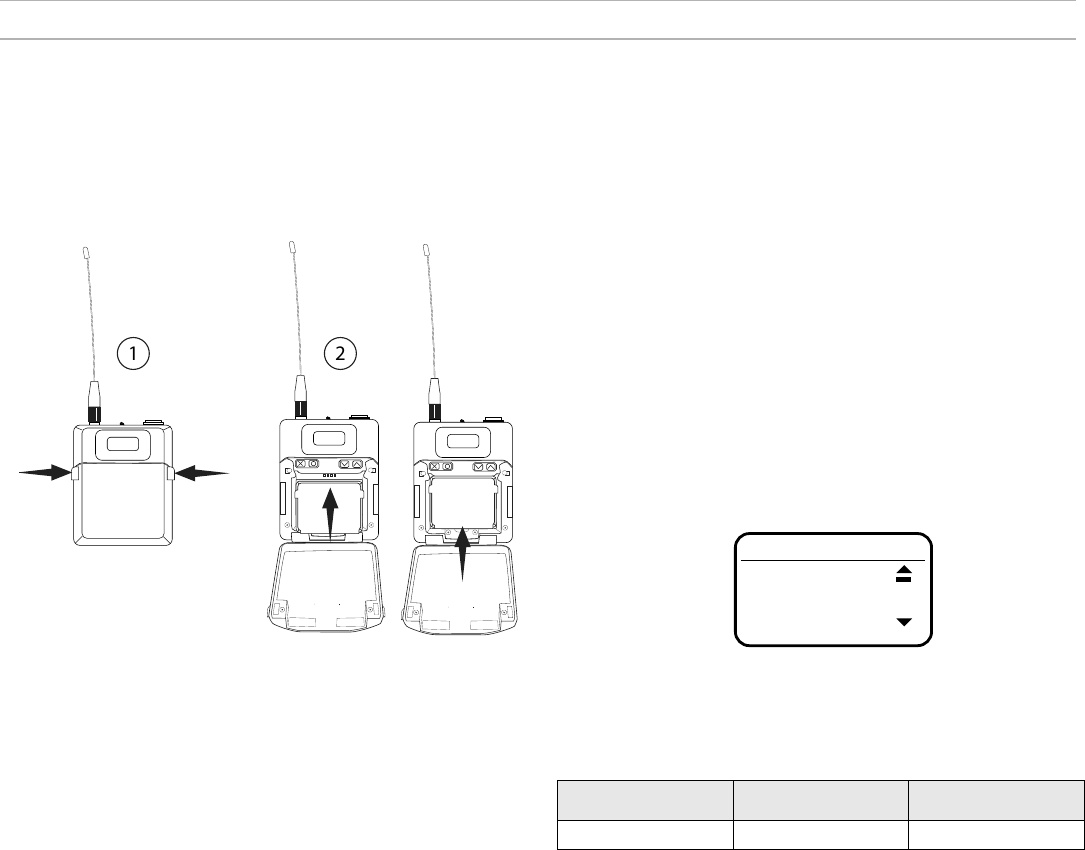
6
Checking Battery Info
When using a Shure rechargeable battery, the receiver and transmitter
home screens display the number of hours and minutes remaining.
Detailed information for the battery is displayed Battery menu of the
transmitter: Utilities > Battery
• Battery: The chemistry type of for the installed battery (Shure,
Alkaline, Lithium, NiMH)
• Bars: Indicates the number of bars displayed
• Time: Battery runtime
• Charge: Percentage of charge capacity
• Health: Percentage of current battery health
• Cycle Count: Total of the number of charging cycles for the installed
battery
Charge
85%
Shure Rechargeable Batteries
Shure lithium-ion batteries offer a rechargeable option for powering the transmitters. Batteries quickly charge to 50% capacity in one hour and reach full
charge within three hours.
Single chargers and multiple bay chargers are available to recharge the Shure batteries.
Caution: Only charge Shure rechargeable batteries with a Shure battery charger.
Battery Installation
① Accessing the Battery Compartment
Press the door latches and open the battery door.
② Inserting the Battery
Insert the battery, contracts first into the battery compartment. Press
down on the tab to fully seat the battery, and then close the battery
door.
Tip: To remove the battery, pull up on the tab on the bottom of the battery.
Important Tips for Care and Storage of Shure Rechargeable Batteries
Proper care and storage of Shure batteries results in reliable performance and ensures a long lifetime.
• Always store batteries and transmitters at room temperature
• Ideally, batteries should be charged to approximately 40% of capacity for long-term storage
• Periodically clean the battery contacts with alcohol to maintain ideal contact
• During storage, check batteries every 6 months and recharge to 40% of capacity as needed
For additional rechargeable battery information, visit www.shure.com.
ADX1 SB910 Battery Runtime
Note: Higher RF power levels decrease battery runtime. Battery runtime
varies with battery age and environmental conditions.
2 mW 10 mW 40 mW
11.0 to 12.0 hours 9.0 to 11.0 hours 6.5 to 8.5 hours
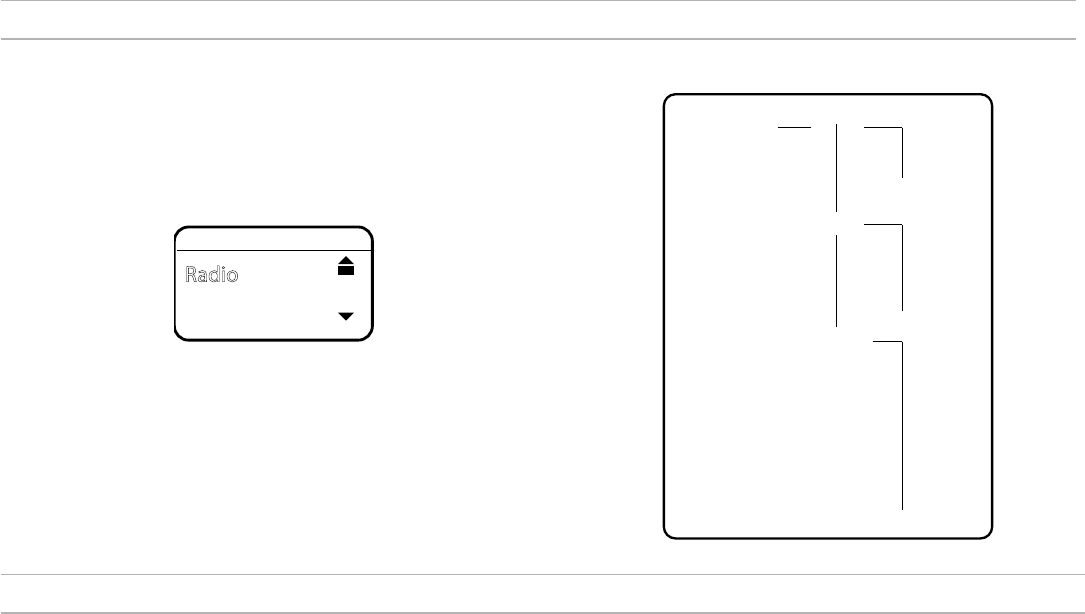
7
Menu Map
Utilities Device ID
Locks
Marker
About
Battery
Talk Sw
Reset All
Main Menu Radio Freq
Power
Output
Audio
Oset
Pad
Polarity
Mute
Tone Gen
Link Info
SL Test
Menu Parameters
The Main menu organizes the available transmitter parameters into three
sub-menus:
• Radio
• Audio
• Utilities
Tip: Use the arrow buttons to scroll between the sub-menus.
Main
Radio
Tips for Editing Menu Parameters
• To access the menu options from the home screen, press O . Use the ar-
row buttons to access additional menus and parameters.
• A menu parameter will blink when editing is enabled
• To increase, decrease or change a parameter, use the arrow buttons
• To save a menu change, press O
• To exit a menu without saving a change, press X
Radio Menu
Freq
Press the O button to enable editing of a group (G:) channel (C:)
or frequency (MHz). Use the arrow buttons to adjust the values. To
edit the frequency, press the O button once to edit the first 3 digits,
or twice to edit the second 3 digits.
Power
Higher RF power settings can extend the range of the transmitter.
Note: Higher RF power settings decrease battery runtime.
Output
Sets the RF output to On or Mute.
- On: RF signal is active
- Mute: RF signal is inactive
Audio Menu
Pad
Adjust the pad to avoid overloading the audio input. Select -12 dB
or Off.
Offset
Adjust Offset level to balance mic levels when using two
transmitters for frequency diversity or when assigning multiple
transmitters to receiver slots. Adjustment range: -12 dB to +21 dB.
Polarity
Selectable polarity assignment for LEMO connector transmitters:
- Pos: Positive pressure on microphone diaphragm produces positive volt-
age on pin 2 (with respect to pin 3 of XLR output) and the tip of the TRS
output.
- Neg: Positive pressure on microphone diaphragm produces negative volt-
age on pin 2 (with respect to pin 3 of XLR output) and the tip of the TRS
output.
Mute
When enabled, the power switch is configured as a mute switch for
the audio:
- Power switch on: audio signal on
- Power switch off: audio signal muted
Tone Gen
Transmitter will generate a continuous test tone:
- Freq: The tone can be set to 400 Hz or 1000 Hz.
- Level: Allows for adjustment of the output level of the test tone.
Utilities Menu
Device ID
Assign a device ID of up to 9 letters or numbers.
Locks
- None: The controls are unlocked
- Power: The power switch is locked
- Menu: The menu parameters are locked
- All: The power switch and menu parameters are locked
Locks the transmitter controls and power switch.
Link Info
Displays the following information about the link between a transmitter and
receiver:
- Not Linked: The transmitter is not linked to a receiver
- Linked: The transmitter is linked to a receiver. Select Unlink? to free the transmitter
from the receiver link.
- Unlinked: The transmitter is not linked to a receiver
SL Test
ShowLink test tool to measure the boundaries of ShowLink coverage.
Marker
When enabled, press the enter button to drop a marker in Wireless
Workbench.
Battery
Displays battery information:
- Battery: The chemistry type of for the installed battery (Shure Rechargeable,
Alkaline, Lithium, NiMH)
- Bars: Indicates the number of bars displayed
- Time: Battery runtime
- Charge: Percentage of charge capacity
- Health: Percentage of current battery health
- Cycle Count: Record of the number of charging cycles for the installed battery
Talk Sw
Indicates the status of the talk switch.
About
Displays the following transmitter information:
- Model: Displays the model number
- Band: Displays the tuning band of the transmitter
- FW Version: Installed firmware
- HW Version: Hardware version
- Serial Num: Serial number
Reset All
Restores all transmitter parameters to factory settings.
Menu Parameter Descriptions
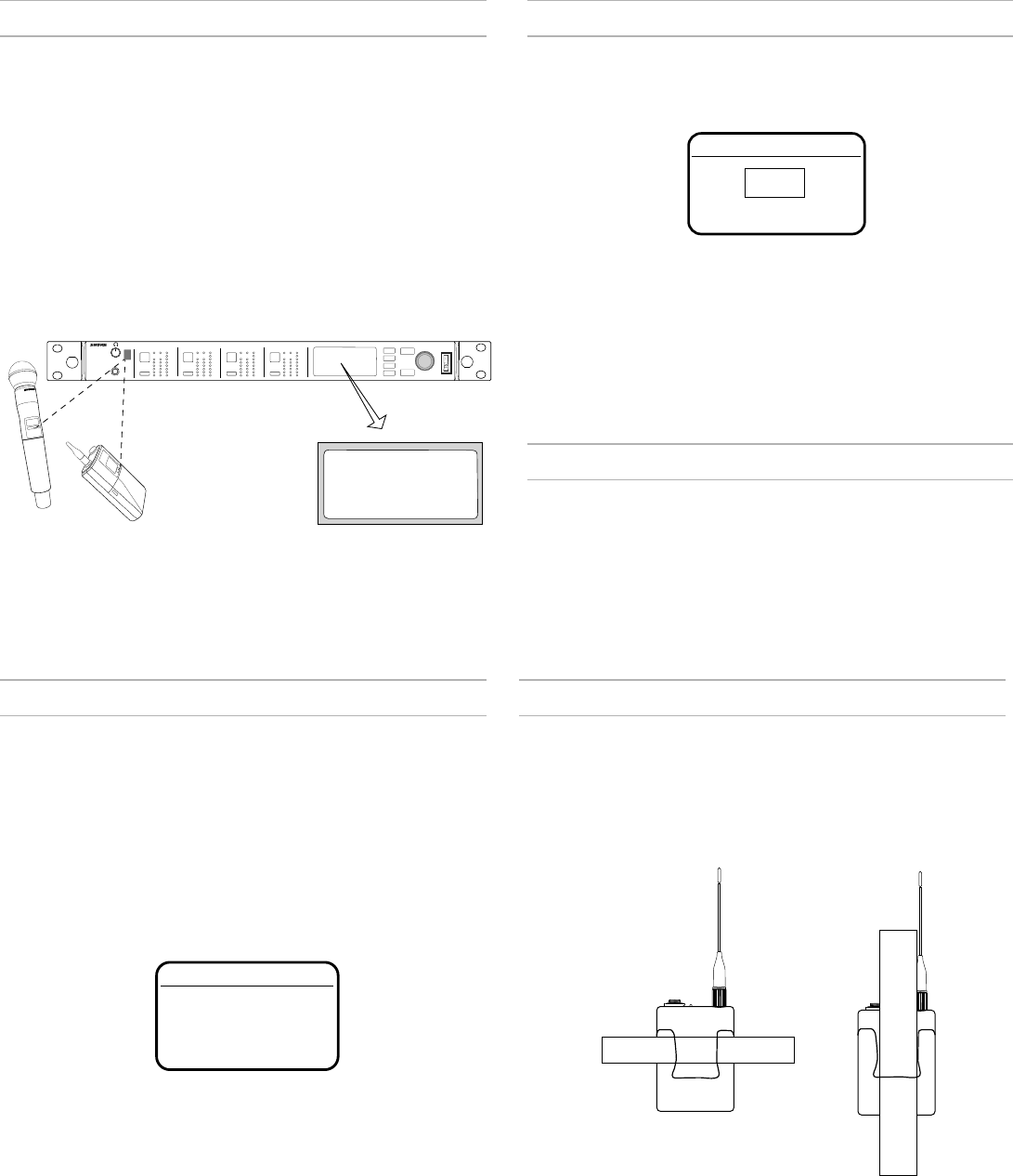
8
IR Sync
Use IR Sync to form an audio channel between the transmitter and
receiver.
Note: The receiver band must match the band of the transmitter.
1. Select a receiver channel.
2. Tune the channel to an available frequency using group
scan or manually turn to an open frequency.
3. Power on the transmitter.
4. Press the SYNC button on the receiver.
5. Align the IR windows between the transmitter and the receiver so that
the IR LED illuminates red. When complete, Sync Success! appears.
The transmitter and receiver are now tuned to the same frequency.
<15 cm (6 in.)
AD4Q
Axient Digital
Wireless Receiver
POWER
PUSH
CONTROL
NAVIGATE
IR RF
A B
OL
AUDIO
SYNC
4
RX 4RF
A B
OL
AUDIO
SYNC
3
RX 3RF
A B
OL
AUDIO
SYNC
2
RX 2RF
A B
OL
AUDIO
SYNC
1
RX 1
ULXD4
Digital Wireless Receiver
sync
Sync Success!
Note:
Any change to the encryption status on the receiver (enabling/disabling
encryption) requires a sync to send the settings to the transmitter. New
encryption keys for the transmitter and receiver channel are generated
on every IR sync, so to request a new key for a transmitter, perform an IR
sync with the desired receiver channel.
Wearing the Bodypack Transmitter
Clip the transmitter to a belt or slide a guitar strap through the transmitter
clip as shown.
For best results, the belt should be pressed against the base of the clip.
Tip: The clip can removed and rotated 180 degrees to increase mounting
options.
RF Mute
RF Mute prevents transmission of the audio by suppressing the RF signal,
while allowing the transmitter to remain powered-on. The home screen
displays RF MUTED in this mode.
RF Output
Mute
1. From the Radio menu, navigate to Output.
2. Choose one of the following options:
- On: RF signal is active
- Mute: RF signal is disabled
3. Press O to save.
Turning the transmitter off and on, or replacing the battery will restore
Output to On.
Power-on RF Mute
Power-on RF Mute places the transmitter in RF Mute mode immediately
when turned on.
• Starting with the transmitter off, press and hold the X button, and then
switch on the power
• Continue to hold the X button until the RF Muted message appears on
the home screen
Tip: To turn the RF Output on, navigate to Radio > Output and select On.
Setting the Frequency Manually
The transmitter can be manually tuned to a specific group, channel, or
frequency.
1. Navigate to the Radio menu and select Freq.
2. Scroll to select G: and C: to edit the group and chan-
nel, or select the frequency parameter (MHz). When ed-
iting the frequency, press O one to enable editing of the
first three digits, or twice to edit the last three digits.
3. Use the ∧∨ buttons to adjust the group, channel, or frequency.
4. Press O to save, and then press X when finished.
Freq
G: 1 C:1
470.700 MHz

9
Input Overload
The OVERLOAD message is displayed when the audio input experiences
a high-level signal. The power LED will turn red as an additional indicator
of an overload. Reduce the input signal or enable the input pad to re-
move the overload.
Tip: To enable the input pad, navigate to Audio > Pad and select -12 dB.
Shure
OVERLOAD
7:45
Matching Audio Levels with Mic Offset
When linking two or more transmitters to a receiver, there may be a
difference in volume levels between microphones or instruments. If this
occurs, use the Offset function to match the audio levels and eliminate
audible volume differences between transmitters. If using a single trans-
mitter, set Offset to 0 dB.
1. Turn on the first transmitter and perform a sound check to
test the audio level. Turn off the transmitter when finished.
2. Turn on the second transmitter and perform a sound check to
test the audio level. Repeat for any additional transmitters.
3. If there is an audible difference in the sound level be-
tween the transmitters, navigate to the Offset menu (Audio
> Offset) in the transmitter to increase or decrease
the Offset in realtime to match the audio levels.
Mic Offset
+3 dB
Tone Generator
The transmitter contains an internal tone generator that produces a
continuous audio signal. The tone is helpful when conducting a sound
check or for troubleshooting the audio signal chain. The level of the tone
is adjustable from -60 dB to 0 dB and the frequency can be set to 400 Hz
or 1000 Hz.
1. From the Audio menu select Tone Gen.
2. Set the frequency to 400 Hz or 1000 Hz.
3. Select Level and use the arrow buttons ad-
just the value between -60 dB and 0 dB.
Tip: Always start with the level set to -60 dB to avoid overloading speak-
ers or headphones.
Turn off the tone by selecting Off from the menu or by cycling the trans-
mitter power.
Tone Gen
Tone: 400Hz
Level: -60db
ShowLink Test
The ShowLink Test is a tool to find the boundaries of the ShowLink cov-
erage area. When the ShowLink test is activated, a five-bar display indi-
cating level of the signal quality is shown on the screen. As the transmitter
moves away from the access point, the number of bars will decrease.
ShowLink control is maintained as long as 1 bar is displayed.
If the transmitter is beyond the coverage range, ShowLink control will not
be possible; however, the audio signal will not be affected or interrupted
as long as the transmitter is within range of the RF signal. To improve cov-
erage, adjust the location of your access points or place additional access
points to extend coverage.
To activate the ShowLink Test:
1. From the Utilities menu, navigate to SL Test.
2. Press the O button to start the test and walk the transmitter around
the coverage area. Monitor the number of bars displayed and
the state of the ShowLink icon. Coverage boundaries are indi-
cated by 0 bars displayed or the ShowLink icon is empty.
3. Press the X button to exit the ShowLink test.
Tip: During a ShowLink test, press O (enter) to drop a marker in Wireless
Workbench.
Updating Firmware
Firmware is embedded software in each component that controls function-
ality. Periodically, new versions of firmware are developed to incorporate
additional features and enhancements. To take advantage of design im-
provements, new versions of the firmware can be uploaded and installed
using the Shure Update Utility. The Shure Update Utility is available for
download from http://www.shure.com/.
Firmware Versioning
When performing an update, download firmware to the receiver first, and
then update transmitters to the same firmware version to ensure consis-
tent operation.
The firmware numbering for Shure devices uses the following format:
MAJOR.MINOR.PATCH (e.g., 1.2.14). At a minimum, all devices on the
network (including transmitters), must have the same MAJOR and MINOR
firmware version numbers (e.g., 1.2.x).
Updating the Transmitter
1. Download the firmware to the receiver.
2. Access the following menu from the receiver:
Device Conguration > Tx Firmware Update.
3. Align the IR ports between the transmitter and the re-
ceiver. IR ports must be aligned for the entire down-
load, which can take 50 seconds or longer.
Tip: The red alignment LED will turn on when the alignment is correct.
4. Press ENTER on the receiver to begin the download to the transmitter.
The receiver will display the progress of the update as a percentage.
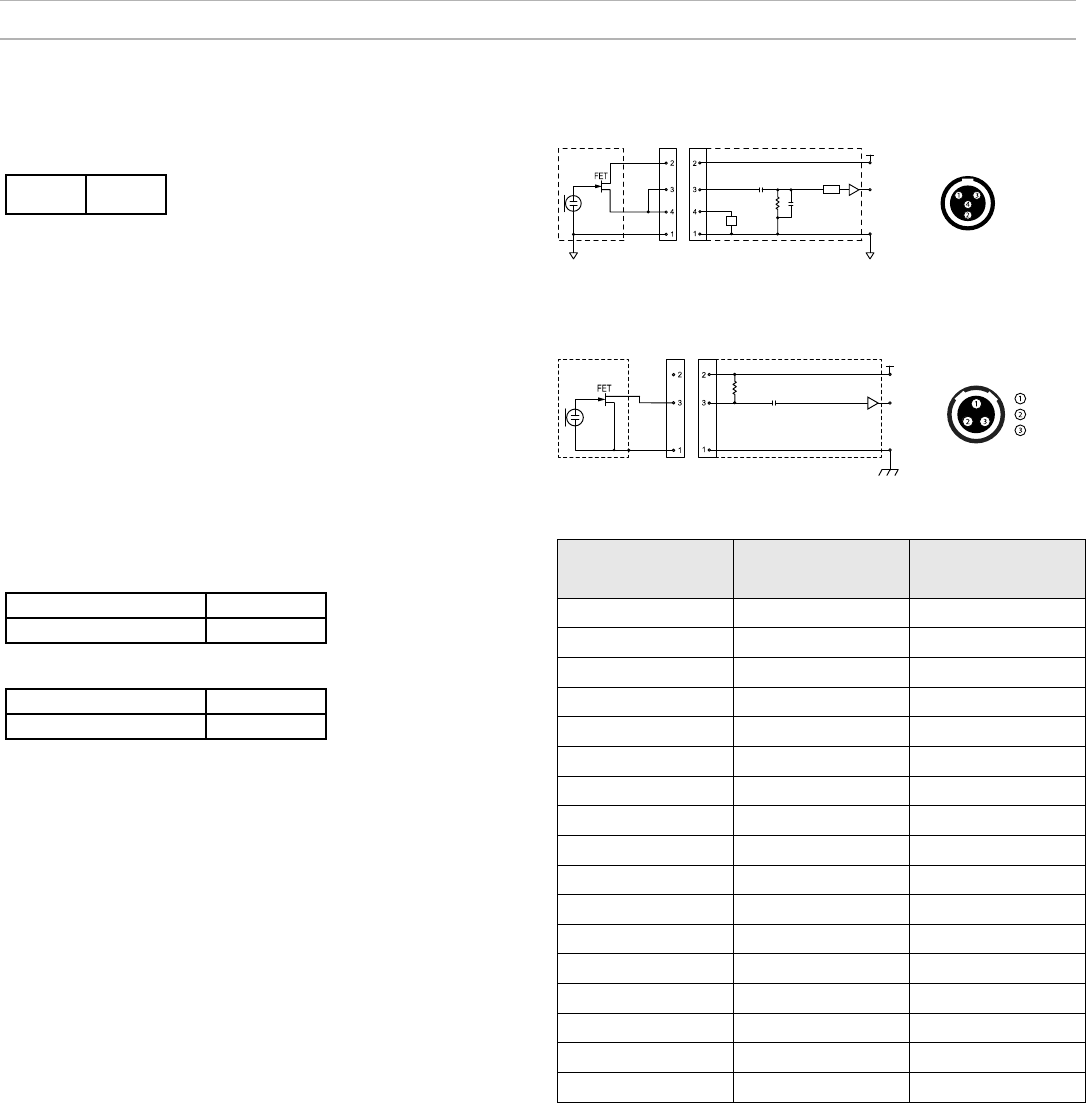
10
Specifications
Mic Offset Range
-12 to 21 dB (in 1 dB steps)
Battery Type
Shure SB910 Rechargeable Li-Ion
Battery Runtime
@ 10 mW
Shure
SB910
up
to 10 hours
Dimensions
91 mm x 68 mm x 19 mm (3.6 in. x 2.7 in. x 0.8 in.) H x W x D
Weight
142 g (5.0 oz.), Without Battery
Housing
Aluminum
Operating Temperature Range
-18°C (0°F) to 63°C (145°F)
Note: Battery characteristics may limit this range.
Storage Temperature Range
-29°C (-20°F) to 74°C (165°F)
Note: Battery characteristics may limit this range.
Audio Input
Connector
4-Pin male mini connector (TA4M) or Lemo Connector
Configuration
Unbalanced
Impedance
4-Pin male mini connector (TA4M) 1 MΩ
Lemo Connector 8.2 MΩ
Maximum Input Level
1 kHz at 1% THD
Pad Off 8.5 dBV (7.5 Vpp)
Pad On 20.5 dBV (30 Vpp)
Preamplifier Equivalent Input Noise (EIN)
System Gain Setting ≥ +20
-120 dBV, A-weighted, typical
RF Output
Antenna Type
UHF 1/4 wave
Connector Type
SMA
Impedance
50 Ω
Occupied Bandwidth
<200 kHz
Modulation Type
Shure Axient Digital Proprietary
Power
2 mW, 10 mW, 40 mW
See Frequency Range and Output Power table, varies by region
ShowLink
Network Type
IEEE 802.15.4
Antenna Type
Zigbee Dual Conformal
Frequency Range
2.40 to 2.4835 GHz (24 Channels)
RF Output Power
10 dBm (ERP)
varies by region
Input Connector Diagrams
TA4M
TA4M
N 440 pF
1µF
Pad
12dB
ZLoad
Active
Top View of Bodypack
5 V DC
5 V DC
Audio Input
Ground
Ground
Bias Voltage
Audio Input
Active Load
LEMO
LEMO
Ground
Top View of Bodypack
SHIELD
.
5 V DC
Ground
Bias Voltage
Audio Input
1µF
Audio Input
Frequency Bands and Transmitter RF Power
Band Frequency Range
(MHz) RF Power (mW)***
G53 470 to 510 2/10/40
G54 479 to 565 2/10/20
G55† 470 to 636 2/10/40
G56◇ 470 to 636 2/10/40
G57△ 470 to 616* 2/10/40
G62 510 to 530 2/10/40
H54 520 to 636 2/10/40
K53† 606 to 698 2/10/40
K54△ 606 to 663** 2/10/40
K55 606 to 694 2/10/40
K56 606 to 714 2/10/40
K57 606 to 790 2/10/40
K58 622 to 698 2/10/40
L54 630 to 787 2/10/40
R52† 794 to 806 2/10/40
JB 806 to 810 2/10
X55 941 to 960 2/10/40
Note: *with a gap between 608 to 614 MHz.
Note: **with a gap between 608 to 614 MHz and a gap between 616 to
653 MHz.
Note: ***power delivered to the antenna port.
Note: †operation mode varies according to region. In Brazil, High Density
mode is used.
Note: △Output power limited to 10 mW above 608 MHz.
Note: ◇Korea defines power as conducted (ERP) which is 1dB less then
declared in table.
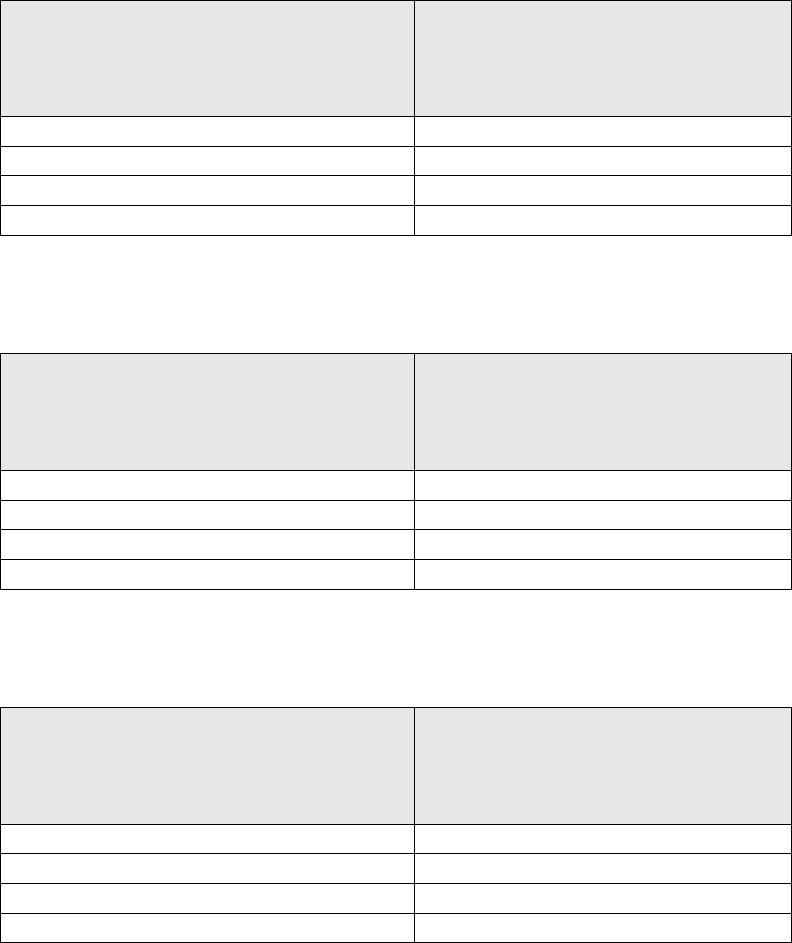
11
K55 606-694 MHz
Country Code
Code de Pays
Codice di paese
Código de país
Länder-Kürzel
Frequency Range
Gamme de frequences
Gamme di frequenza
Gama de frequencias
Frequenzbereich
A, B, BG, CH, CY, CZ, D, DK, EST, F *
FIN, GB, GR, H, HR, I, IRL, IS, L, LT *
M, N, NL, P, PL, RO, S, SK, SLO, TR *
all other countries *
* This equipment may be capable of operating on some frequencies not authorized in your region. See Licensing
Information.
G56 470-636 MHz
Country Code
Code de Pays
Codice di paese
Código de país
Länder-Kürzel
Frequency Range
Gamme de frequences
Gamme di frequenza
Gama de frequencias
Frequenzbereich
A, B, BG, CH, CY, CZ, D, DK, EST, F *
FIN, GB, GR, H, HR, I, IRL, IS, L, LT *
M, N, NL, P, PL, RO, S, SK, SLO, TR *
all other countries *
* This equipment may be capable of operating on some frequencies not authorized in your region. See Licensing
Information.
K57 606-790 MHz
Country Code
Code de Pays
Codice di paese
Código de país
Länder-Kürzel
Frequency Range
Gamme de frequences
Gamme di frequenza
Gama de frequencias
Frequenzbereich
A, B, BG, CH, CY, CZ, D, DK, EST, F *
FIN, GB, GR, H, HR, I, IRL, IS, L, LT *
M, N, NL, P, PL, RO, S, SK, SLO, TR *
all other countries *
* This equipment may be capable of operating on some frequencies not authorized in your region. See Licensing
Information.

12
Certifications
Certified under FCC Part 15 and FCC Part 74.
Certified in Canada to RSS-210.
FCC ID: DD4ADX1G57, DD4ADX1K54, DD4ADX1X55. IC: 616A-ADX1G57, 616A-ADX1K54
This device complies with Industry Canada licence-exempt RSS standard(s). Operation of this device is subject to the following two conditions: (1) this
device may not cause interference, and (2) this device must accept any interference, including interference that may cause undesired operation of the
device. Le présent appareil est conforme aux CNR d'Industrie Canada applicables aux appareils radio exempts de licence. L'exploitation est autorisée
aux deux conditions suivantes : (1) l'appareil ne doit pas produire de brouillage, et (2) l'utilisateur de l'appareil doit accepter tout brouillage radioélectrique
subi, même si le brouillage est susceptible d'en compromettre le fonctionnement.
Meets essential requirements of the following European Directives:
• WEEE Directive 2002/96/EC, as amended by 2008/34/EC
• RoHS Directive 2011/65/EU
Note: Please follow your regional recycling scheme for batteries and electronic waste
This product meets the Essential Requirements of all relevant European directives and is eligible for CE marking.
Hereby, Shure Incorporated declares that the radio equipment is in compliance with Directive 2014/53/EU. The full text of the EU declaration of conformi-
ty is available at the following internet address: http://www.shure.com/europe/compliance
Authorized European representative:
Shure Europe GmbH
Headquarters Europe, Middle East & Africa
Department: EMEA Approval
Jakob-Dieffenbacher-Str. 12
75031 Eppingen, Germany
Phone: +49-7262-92 49 0
Fax: +49-7262-92 49 11 4
Email: EMEAsupport@shure.de
LICENSING INFORMATION
Licensing: A ministerial license to operate this equipment may be required in certain areas. Consult your national authority for possible requirements.
Changes or modifications not expressly approved by Shure Incorporated could void your authority to operate the equipment. Licensing of Shure wireless
microphone equipment is the user’s responsibility, and licensability depends on the user’s classification and application, and on the selected frequency.
Shure strongly urges the user to contact the appropriate telecommunications authority concerning proper licensing, and before choosing and ordering
frequencies.
Information to the user
This equipment has been tested and found to comply with the limits for a Class B digital device, pursuant to Part 15 of the FCC Rules. These limits are
designed to provide reasonable protection against harmful interference in a residential installation. This equipment generates uses and can radiate radio
frequency energy and, if not installed and used in accordance with the instructions, may cause harmful interference to radio communications. However,
there is no guarantee that interference will not occur in a particular installation. If this equipment does cause harmful interference to radio or television
reception, which can be determined by turning the equipment off and on, the user is encouraged to try to correct the interference by one or more of the
following measures:
• Reorient or relocate the receiving antenna.
• Increase the separation between the equipment and the receiver.
• Connect the equipment to an outlet on a circuit different from that to which the receiver is connected.
• Consult the dealer or an experienced radio/TV technician for help.
This device operates on frequencies shared with other devices. Consult the Federal
Communications Commission White Space Database Administration website to determine available
channels in your area prior to operation.
No user-operated control of power, frequency, or other parameters are available beyond those
specified in this operating manual.
Australia Warning for Wireless
This device operates under an ACMA class licence and must comply with all the conditions of that licence including operating frequencies. Before 31
December 2014, this device will comply if it is operated in the 520-820 MHz frequency band. WARNING: After 31 December 2014, in order to comply,
this device must not be operated in the 694-820 MHz band.
Canada Warning for Wireless
This device operates on a no-protection, no-interference basis. Should the user seek to obtain protection from other radio services operating in the
same TV bands, a radio licence is required. For further details, consult Innovation, Science and Economic Development Canada’s document Client
Procedures Circular CPC-2-1-28, Voluntary Licensing of Licence-Exempt Low-Power Radio Apparatus in the TV Bands.
Ce dispositif fonctionne selon un régime de non brouillage et de non protection. Si l’utilisateur devait chercher à obtenir une certaine protection contre
d’autres services radio fonctionnant dans les mêmes bandes de télévision, une licence radio serait requise. Pour en savoir plus, veuillez consulter la
Circulaire des procédures concernant les clients CPC 2 1 28, Délivrance de licences sur une base volontaire pour les appareils radio de faible
puissance exempts de licence et exploités dans les bandes de télévision d’Innovation, Sciences et Développement économique Canada.
13

PT. GOSHEN SWARA INDONESIA
Kompleks Harco Mangga Dua Blok L No. 35 Jakarta Pusat
I.16.GSI31.00501.0211
Europe, Middle East, Africa: